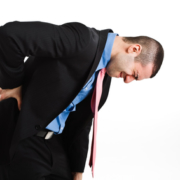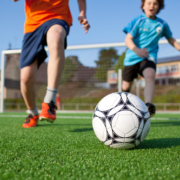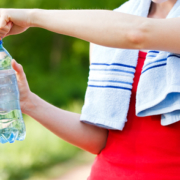3 Differences in Sprains and Strains & How Chiropractic Can Help
As experienced chiropractors, we like answering the questions we receive from our patients. A common inquiry is "what is the difference between a sprain and a strain?" Sprains and strains are injuries to the musculoskeletal system that are commonly diagnosed conditions, and are two separate issues people frequently mix up. We will attempt to explain away some of the confusion today.
Let’s look at three ways sprains and strains differ from each other.
1. Sprains and strains afflict different parts of the body.
According to the National Institute of Arthritis and Musculoskeletal and Skin Diseases (NIH), a sprain is a stretch or tear of a ligament which provides joint stability. A strain is a stretch or tear of a muscle or tendon in the area where it is turning into a muscle.
2. Sprains and strains are most often caused from different actions.
Falling or twisting the wrong way typically causes a sprain, because the movement forces a joint into an awkward position and ends up stretching or tearing the ligament. Twisting an ankle, falling down the stairs, or trying to catch yourself on an icy walkway are all ways to end up with a sprain.
A strain often results from overexertion or trauma, and repetitive movement. Lifting an item that is too heavy, jumping into an exercise routine that is too strenuous, or performing repetitive movements in either a sport or work are ways an individual can end up suffering from a strain.
3. Sprains and strains generally affect different areas of the body.
Sprains occur at parts of the body that are injured when falling or suddenly twisting. According to the U.S. National Library of Medicine, ankle sprains alone number around 2 million each year.
Ankles, wrists, knees, and fingers are all areas that are frequently sprained. Strains, on the other hand, commonly occur in the back, shoulder, or hamstring, as both of these areas are affected by overexertion or repetitive movement.
Although sprains and strains are different injuries, they do have some similarities. This is most likely why people get them mixed up.
Let’s discuss a few commonalities of sprains and strains.
Both share common symptoms. Both injuries can bring on pain, swelling, and limited movement at the injury site. The pain can be moderate or intense, depending on the severity of the injury. Sprains and strains both benefit from ice packs, rest, and elevation.
They can require surgery. Most diagnosed strains and sprains heal on their own with time, but a serious tear can require surgery to repair. With both injuries, it’s important to visit a doctor if an individual experiences severe pain and swelling, and decreased mobility.
Both can benefit from chiropractic care. Chiropractors can work wonders on the neck and back, but chiropractic care can assist in lessening the impact of a strain or sprain injury, too.
The benefits of seeing a chiropractor for both sprains and sprains are twofold. Chiropractic treatments promote healing of the injured area as well as help strengthen the areas around the injury to decrease the chance of future injuries.
Sprains and strains can sideline individuals from their activities, no matter if they are athletes or regular guys doing yard work. It’s vital to take steps to avoid sprains and strains in the first place.
Always properly stretch and avoid overexertion to prevent strains. Take pains to clear walkways and stairways to avoid falls or sudden twisting movements to decrease the risk of sprains.
If you end up with a strain or sprain, contact us for a consultation. We have extensive experience in working with patients suffering from sprains and strains.
This article is copyrighted by Blogging Chiros LLC for its Doctor of Chiropractic members and may not be copied or duplicated in any manner including printed or electronic media, regardless of whether for a fee or gratis without the prior written permission of Blogging Chiros, LLC.




